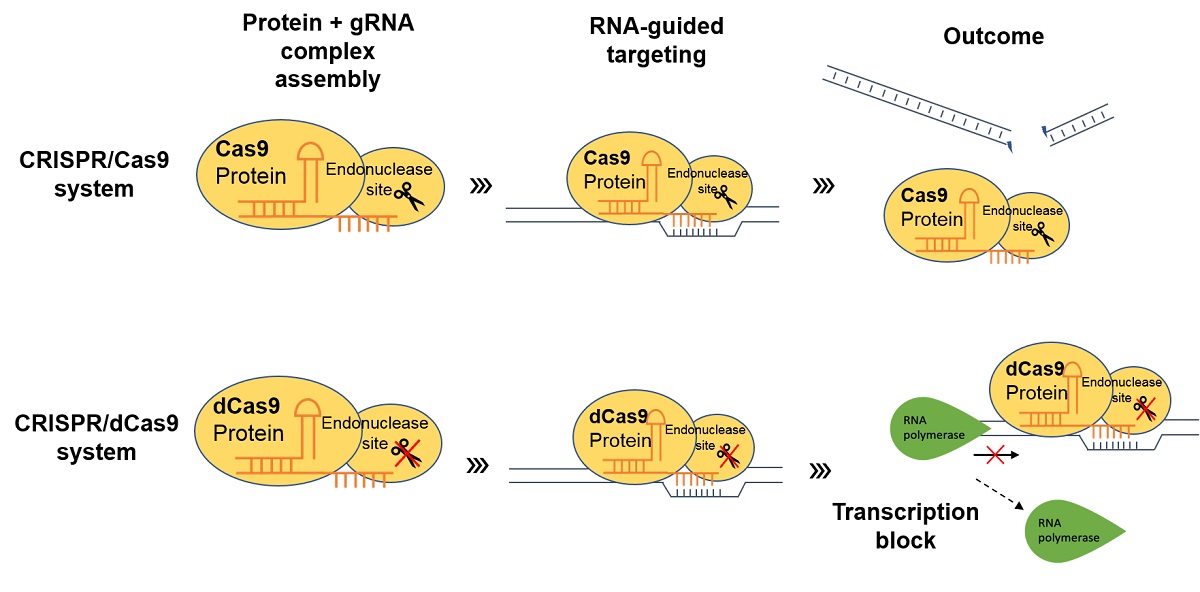RNA-guided genomic transcriptional regulation tools, namely Clustered Regularly Interspaced Short Palindromic Repeats interference (CRISPRi) and CRISPR-mediated gene activation (CRISPRa), are a powerful technology for the field of functional genomics. Deriving from the CRISPR/Cas9 system, both systems comprise a catalytically dead Cas9 (dCas9) and a single guide RNA (sgRNA). This type of dCas9 is incapable of cleaving DNA but retains its ability to specifically bind to DNA. The binding of the dCas9/sgRNA complex to a target gene results in transcriptional interference. The CRISPR/dCas9 system has been explored as a tool for transcriptional modulation and genome imaging. Despite its potential applications and benefits, the challenges and limitations faced by the CRISPR/dCas9 system include the off-target effects, PAM sequence requirement, efficient delivery methods, and the CRISPR/dCas9-interfered crops being labeled as genetically modified organisms in several countries. This review highlights the progression of CRISPR/dCas9 technology as well as its applications and potential challenges in crop improvement.

